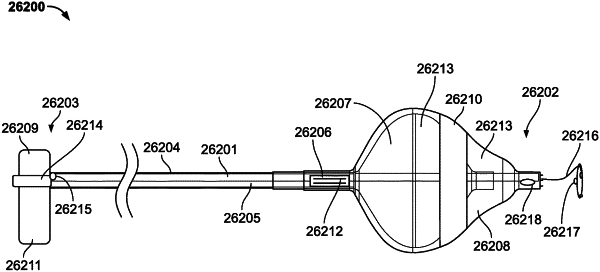| CPC A61B 18/1492 (2013.01) [A61B 5/6853 (2013.01); A61B 2018/00232 (2013.01); A61B 2018/00357 (2013.01); A61B 2018/00791 (2013.01); A61B 2018/048 (2013.01)] | 20 Claims |

|
1. A system configured to ablate cardiac tissue, comprising:
a catheter adapted to be positioned proximate a cardiac tissue of a patient, wherein the catheter comprises:
an elongate body having a lumen, a proximal end and a distal end;
an outer balloon and an inner balloon positioned at the distal end such that the inner balloon is positioned within the outer balloon; wherein the outer balloon is configured to be inflated with a first fluid, and the inner balloon is configured to be infused with heated vapor, to form an ablation zone having a surface area defined by a portion of the inner balloon contacting a portion of the outer balloon and thereby transfer heat from the heated vapor in the inner balloon through the ablation zone to the cardiac tissue; and
a controller, wherein the controller comprises programmatic instructions that, when executed:
cause the first fluid to be infused into the outer balloon and thereby increase a pressure of the outer balloon to a first outer balloon pressure;
cause heated water vapor to be infused into the inner balloon and thereby increase a pressure of the inner balloon to a first inner balloon pressure;
maintain the first inner balloon pressure for a first pre-determined period of time;
stop the infusion of heated vapor and thereby cause the pressure of the inner balloon to decrease to a second inner balloon pressure after expiry of the first pre-determined period of time; and
deflate the outer balloon to a second outer balloon pressure.
|